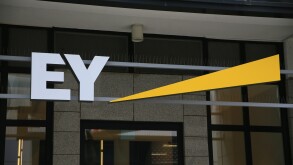For investments into Switzerland, the investment structure has become more and more important in recent years. The choice of investment vehicle can influence the chances of successfully reclaiming Swiss withholding tax and − taking into account the tax leakage − directly impacts the performance of the investment.
This article highlights the key aspects of withholding tax refunds on Swiss investments for non-Swiss investors.
1 Investment via an investment fund
1.1 Swiss investment funds
There are the following Swiss investment funds:
The contractual fund (FCP) is an open-ended collective investment scheme. The collective investment agreement governs the relationship between the fund manager, the custodian, and the investor.
The investment company with variable capital (SICAV) is an open-ended collective investment scheme with the sole purpose of managing its own assets. It may manage these assets itself or delegate the task to others.
The limited partnership for collective investment (LPCI) is a closed-ended collective investment scheme; i.e., investors do not have the right to redeem their units at any time at net asset value. The term is limited. In an LPCI, a Swiss corporation is the general partner and the investors the limited partners. The general partner is responsible for the management of the LPCI and is subject to unlimited liability. In contrast, the limited partners are passive investors, and their liability is limited to their capital contribution.
The investment company with fixed capital (SICAF) is a closed-ended collective investment scheme whose sole purpose is collective investment.
The limited qualified investor fund (L-QIF) is an independently regulated fund category that is established in the form of an FCP, a SICAV, or an LPCI. It is not possible to structure an L-QIF as a SICAF. The L-QIF is a collective investment scheme for qualified investors that is not subject to regulation and is based on the Luxembourg reserved alternative investment fund. It is flexible and can be used for alternative investments such as private equity, infrastructure, commodities, or cryptocurrencies. The L-QIF is managed by a regulated Swiss fund management company.
Swiss investment funds are generally treated as tax-opaque for Swiss withholding tax purposes and are entitled to claim Swiss withholding tax. In cases where the fund holds a qualifying participation in a Swiss company – i.e., a capital quota of at least 10% – relief at source applies and gross dividends can be distributed to the fund.
Because of the opaque tax treatment, all distributed and accumulated income from Swiss investment funds is subject to a 35% withholding tax, except for the following:
Capital gains and capital repayments, if distributed with a separate coupon or accumulated in a separate account.
Income from directly held real estate, if it is distributed with a separate coupon or accumulated in a separate account.
A payment for the redemption of fund units. According to the practice of the Swiss Federal Tax Administration (SFTA), such payments are exempt from withholding tax, even if the underlying income would be taxable, provided there is no case of abuse.
A declaration instead of a payment of withholding tax by investment funds with qualified investors, such as tax-exempt domestic pension schemes, social security and compensation funds, or regulated or government-owned life insurance companies.
A declaration of domicile (affidavit) by an FCP, a SICAF, or an LPCI with at least 80% taxable income from non-Swiss sources for non-Swiss resident investors.
The fact that withholding tax is levied on practically all Swiss investment funds makes them an unattractive investment vehicle for non-Swiss investors (except for the purpose of grouping qualified investors, or when using the affidavit procedure described above).
1.2 Foreign investment funds
Investment into Swiss equity is subject to 35% withholding tax. Therefore, it is essential to make sure that there is:
No withholding tax due to the existence of capital contribution reserves that can be repaid without withholding tax; or
A tax treaty, under which at least a partial withholding tax refund is possible.
The availability of such relief is often a key factor in determining the tax efficiency of the investment structure.
1.2.1 Refunds to foreign investment funds
Certain tax treaties allow an investment vehicle to reclaim withholding tax on behalf of the investors. The standard refund rate is 20%, with a residual withholding tax of 15%.
Switzerland’s tax treaties with Canada, Australia, Brazil, Denmark, Germany, France, the UK, the Netherlands, Norway, Austria, Sweden, Spain, and the US provide for such a possibility.
This facilitates the reclaiming of Swiss withholding tax. However, proof of beneficial ownership and the tax residence of the investors must still be evidenced to the SFTA.
The following details have to be disclosed when filing the refund claim:
The type of investor (individual or corporate entity);
Their full name;
Their physical address;
Their tax identification number; and
The number of units in the investment vehicle and quota in net asset value at the time the income subject to withholding tax was received.
As the identity of indirect investors is notoriously difficult to establish in practice, the SFTA accepts the confirmation of such investors by an accredited provider (e.g., Broadridge, for US investors) in certain cases.
1.2.2 Direct refunds to investors
In the case of transparent vehicles, investors are entitled to a withholding tax refund based on the any applicable tax treaties. The standard refund is 20%, with a residual withholding tax of 15%. The vehicles or the investment manager may act on behalf of the investors. However, the SFTA applies strict rules regarding proof of beneficial ownership and tax residence.
In practice, these cases are usually difficult to handle because investors do not submit the necessary information for a refund claim or are not even aware of the details regarding Swiss income and the Swiss withholding tax on such income.
As investors have become more aware of the fact that tax leakage impacts the overall performance of an investment, more providers are making efforts to reclaim withholding tax on behalf of investors to improve the net return of the investments concerned.
2 Investment via an investment company
2.1 Holding company in a tax treaty jurisdiction
When acquiring a Swiss equity, particularly in larger investments such as private equity, it is crucial to ensure that distributions from the Swiss target to the acquisition company are exempt from Swiss withholding tax based on an applicable tax treaty or that the holding company is entitled to a full or partial refund of the tax withheld. The availability of treaty relief or refund rights is a key consideration in structuring the acquisition efficiently from a tax perspective.
To claim treaty benefits, the applicant has to be a tax resident of the relevant treaty state and the beneficial owner of the dividend income received. In addition, the claim must not constitute treaty abuse, as in the case of treaty shopping, where an investment is routed through a jurisdiction with a favourable tax treaty. A structure is viewed as abusive if one of its main purposes is to obtain benefits under a tax treaty, which, considering the specific circumstances, is incompatible with the object and purpose of the tax treaty.
The SFTA recognises an investment structure as a legitimate holding structure entitled to tax treaty benefits if the legal entity resident in the treaty jurisdiction has sufficient substance (financial, functional, personnel, and/or infrastructural):
Sufficient financial substance requires an equity ratio of at least 30% based on book values.
Functional substance necessitates the active performance of a holding function. In addition to its Swiss participation, the company must hold other qualifying participations of at least 10% in entities based in other countries, with the total value of these participations being comparable to that of the Swiss investment.
Personnel or infrastructural substance must be adequate to the nature and scope of the business activity and requires the presence of suitably qualified staff and appropriately equipped office premises. It is not necessary for such personnel to be employed by the entity itself, as long as it is at the disposition of the company and performs the relevant functions.
If the beneficial owner of the holding company is resident in the same country as the holding company, the SFTA views such a structure as legitimate, as long as the financial substance is sufficient. If the holding entity is an operational business entity, personnel, functional, and infrastructural substance is usually considered adequate. On the other hand, if the beneficial owner is not a resident in a treaty country and the holding entity does not have operations, the substance requirements of the SFTA are stricter.
Acquisition vehicles in private equity structures need to prove that the investment management, including investment and divestment, is performed in the jurisdiction of the holding entity. If this is not the case, the tax residence of the investors in the jurisdiction of the holding entity or in a different treaty jurisdiction may enable the holding entity to access treaty benefits. However, the possibility of claiming treaty benefits depends on the investment structure and the treaty benefits of the investors. In practice, it is often difficult to obtain sufficiently detailed information about the investors that would enable the holding entity to claim treaty benefits based on the investors.
Finally, the holding company must be the beneficial owner of the dividend, meaning that a diversion of the dividend to a different person through a mechanisms such as a profit participating loan or other obligations that could make the holding company a mere conduit.
2.2 Offshore holding company
In cross-border situations, the use of an offshore acquisition or holding vehicle may be attractive from a structuring perspective. However, as no withholding tax refund can be claimed without a tax treaty, a potential Swiss withholding tax of 35% is incurred with an offshore holding company. For that reason, offshore holding companies should be avoided for Swiss equity investments, unless there is a very specific reason and the potential withholding tax exposure has been analysed beforehand.
If the primary objective of the investment is to realise a capital gain upon exit, the use of an offshore holding structure may be a possibility.
In cases where the Swiss equity investment is sold to a buyer who is entitled to a full or partial refund of Swiss withholding tax, the transaction may result in an improvement of the withholding tax refund position compared with that of the previous shareholder. In such cases, the SFTA applies the so-called old reserves practice. This means that distributable reserves or retained earnings available at the time of the transaction that were not distributed before the transaction, despite assets being available for distribution, will be subject to a deferred withholding tax of 35%. The SFTA will refuse a withholding tax refund on any future dividend distribution up to the amount of the distributable reserves or, if lower, the amount of assets that could have been distributed at the time of the transaction. Only after the full distribution of the identified old reserves may subsequent dividend payments benefit from treaty relief.
2.3 Swiss holding company
The use of a Swiss holding company for Swiss equity investments is, in principle, not problematic and can be compared to an investment via Swiss investment funds. The holding company is entitled to a full relief of withholding tax but must remit withholding tax on any dividend distribution. For the investor, the question of the withholding tax refund is just shifted to a different tier but not resolved.
With regard to the use of a Swiss company as an acquisition vehicle, there is the risk that the SFTA qualifies the transaction as abusive if the sum of the share capital, the capital contribution reserve, and any shareholder loan of the acquisition company exceeds that of the Swiss target entity. In the case of such an ‘extended international transposition’, withholding tax relief would be denied on distributions from the target company to the acquisition company up to the amount at which the combined capital of the acquisition company exceeds the combined capital of the target company. However, if the acquisition company can prove that this structure is not abusive, there will be no negative withholding tax consequences and future dividends from the target company to the acquisition company will benefit from full withholding tax relief. This proof can be a third-party financing that exceeds 50% of the purchase price or the presence of substantial Swiss resident shareholders in the acquisition company.
3 Investments via a foreign foundation
When Swiss equity investments are made by a non-Swiss foundation or comparable foreign vehicle that is not transparent for withholding tax purposes, it is essential to ensure that such a vehicle is entitled to at least a partial refund of withholding tax based on a tax treaty. This requires the domiciliation of the foundation in a treaty country and the acceptance of the foundation as a legitimate holding structure for withholding tax purposes. Like a holding company, a foundation requires substance in the jurisdiction where it is domiciled. Since, from a Swiss perspective, a foundation is an uncontrolled legal entity, its tax residency is determined by the location where its effective management takes place.
In addition, the income subject to Swiss withholding tax must be attributable to the foundation for tax purposes and the foundation must have the right to use the income. For charitable tax-exempt foundations and entrepreneurial foundations, beneficial ownership is usually conceded. In the case of family foundations, the situation is more complex.
If the foreign foundation is a controlled foundation, the SFTA does not consider the income attributable to the foundation, and withholding tax refunds will be denied. This is the case if the founder or the beneficiaries wield power over the foundation’s assets and treat them as if they were their personal assets. The SFTA applies a substance-over-form approach and assesses the overall circumstances. Indicators of a controlled foundation include:
Provisions in the foundation’s deed or statutes that allow the founder to revoke, dissolve, or unilaterally amend the foundation documents;
The designation of the founder as a beneficiary, either as an initial or residual beneficiary;
The existence of clearly identifiable beneficiaries with specific rights to the income or assets of the foundation;
A significant overlap in identity between the founder, the foundation’s board members, and the beneficiaries; and
The presence of a mandate or control agreement between the founder and the foundation’s board members indicating ongoing influence and control.
Even for uncontrolled family foundations, the SFTA maintains a strict practice, particularly if a full relief from withholding tax is sought in the case of qualifying equity investments.
4 Key takeaways on Swiss withholding tax refunds for non-Swiss investors
Despite the challenges related to withholding tax refunds, investments in Swiss equity can be managed by careful structuring and compliance with the formalities required by the SFTA. A full disclosure of the identity and tax residence of the investors or beneficial owners is required in most cases.
The use of Swiss investment vehicles, either investment funds or holding companies, is less attractive than the use of a non-Swiss vehicle because the question of the withholding tax refund is only shifted to a different level. In the case of private equity investments, there may be other reasons, such as financing, why a Swiss investment structure would be the preferred option.
Non-Swiss investment vehicles are usually preferable for the purpose of obtaining a withholding tax refund, provided they are in a tax treaty jurisdiction and fulfil the necessary requirements for a withholding tax refund in the specific case. The optimal choice of the jurisdiction of the investment vehicle depends on the existing or future substance and the tax residence and tax status of the investors.













